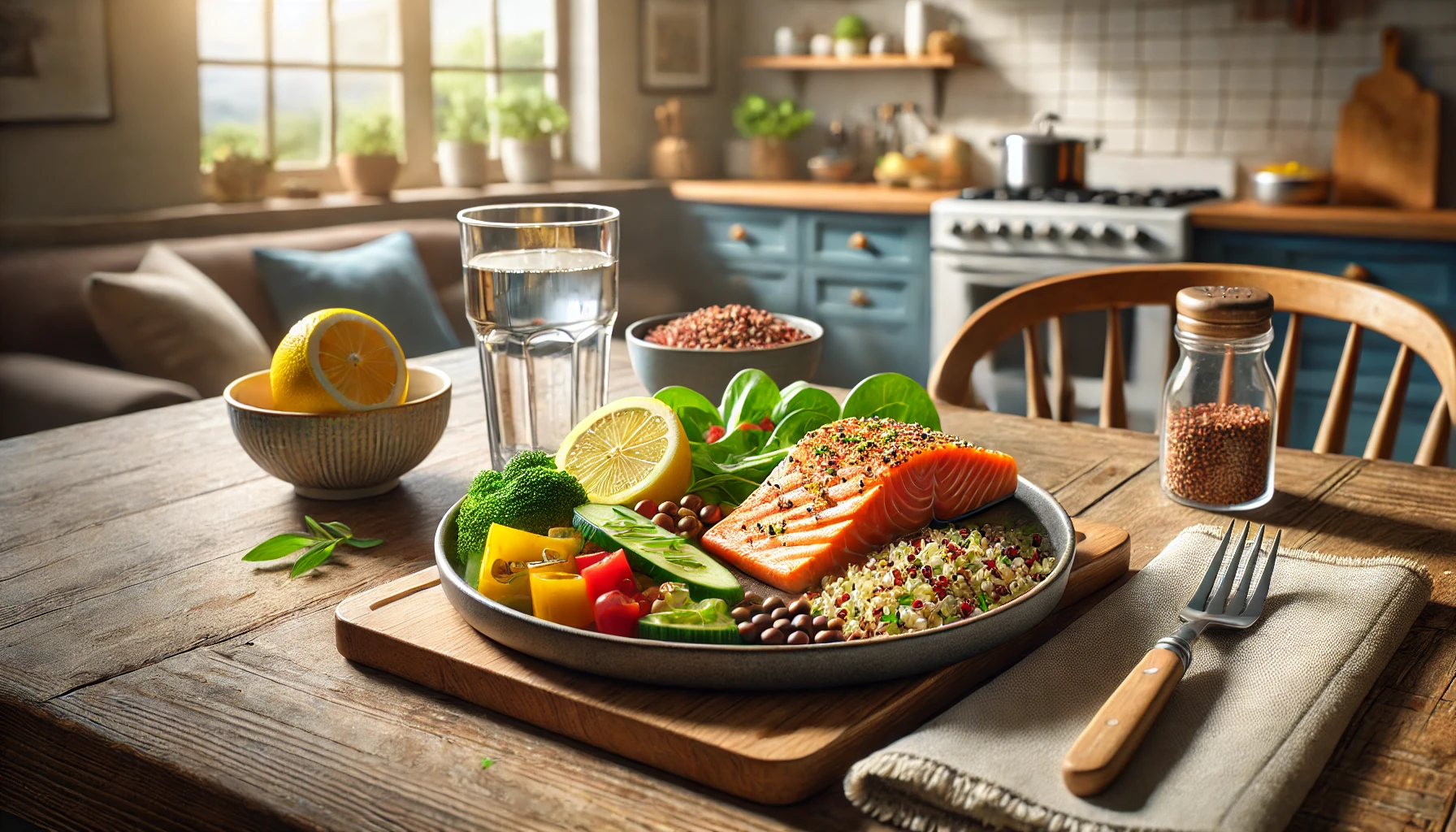Eating healthy doesn’t mean giving up your favorite foods or following restrictive diets. Instead, it’s about balance, making smart choices, and creating sustainable habits. In this guide, you’ll learn how to maintain a nutritious diet without stress or deprivation.
1. Understanding a Balanced Diet
A balanced diet provides all the essential nutrients your body needs to function properly. It includes:
✅ Carbohydrates – Provide energy (whole grains, fruits, vegetables).
✅ Proteins – Build and repair muscles (lean meats, eggs, beans, tofu).
✅ Healthy fats – Support brain function and cell growth (avocados, nuts, olive oil).
✅ Vitamins & minerals – Boost immunity and overall health (fruits, vegetables, dairy).
✅ Water – Essential for digestion, circulation, and temperature regulation.
Instead of eliminating food groups, focus on moderation and variety.
2. Simple Tips for a Healthier Diet
Eat Whole Foods Instead of Processed Foods
Whole foods, such as fruits, vegetables, lean proteins, and whole grains, are rich in nutrients and fiber. Processed foods often contain added sugars, unhealthy fats, and artificial ingredients.
✔ Choose brown rice over white rice.
✔ Swap whole wheat bread for white bread.
✔ Pick fresh fruit instead of sugary snacks.
Control Portion Sizes Without Starving
You don’t need to count every calorie, but being mindful of portion sizes can prevent overeating.
- Use smaller plates to control portions naturally.
- Stop eating when you feel 80% full—your brain takes time to register fullness.
- Serve vegetables first on your plate to ensure you eat them.
Include Protein in Every Meal
Protein helps keep you full longer and supports muscle health. Great protein sources include:
🥚 Eggs
🐟 Fish
🍗 Chicken
🥜 Nuts and seeds
🌱 Lentils and beans
Stay Hydrated
Thirst is often mistaken for hunger. Drinking enough water improves digestion and energy levels.
💧 Aim for at least 8 glasses of water per day.
🍋 Add lemon or mint for a refreshing twist.
🚫 Avoid sugary drinks like sodas and excessive fruit juices.
3. Making Healthy Eating Enjoyable
Allow Yourself Treats in Moderation
Completely cutting out your favorite foods can lead to cravings and binge eating. Instead, follow the 80/20 rule:
🥦 80% healthy, nutrient-rich foods
🍫 20% indulgences (chocolate, desserts, etc.)
Make Healthy Versions of Your Favorite Meals
- Love pasta? Try whole wheat or zucchini noodles.
- Craving fries? Bake sweet potato fries instead.
- Want ice cream? Make a banana smoothie with yogurt.
Cook More at Home
Home-cooked meals give you control over ingredients and portion sizes. Plus, it’s often cheaper and healthier than eating out.
4. Meal Planning for a Stress-Free Diet
Planning meals in advance helps you make better choices and avoid last-minute unhealthy options.
✔ Plan a weekly menu to save time and money.
✔ Prepare meals in batches to have healthy options ready.
✔ Keep healthy snacks like nuts, yogurt, and fruit available.
Example of a Balanced Day of Eating
📝 Breakfast: Scrambled eggs with whole wheat toast and avocado
📝 Snack: Greek yogurt with honey and almonds
📝 Lunch: Grilled chicken with quinoa and roasted vegetables
📝 Snack: Carrot sticks with hummus
📝 Dinner: Salmon with brown rice and steamed broccoli
5. Healthy Eating Is a Lifestyle, Not a Diet
Forget quick-fix diets. The key to long-term health is consistency and flexibility. Focus on nourishing your body while still enjoying food.
🔹 Make small, gradual changes.
🔹 Listen to your body’s hunger and fullness cues.
🔹 Enjoy your food without guilt.
By following these simple principles, you can build a sustainable, healthy diet without stress or suffering.

